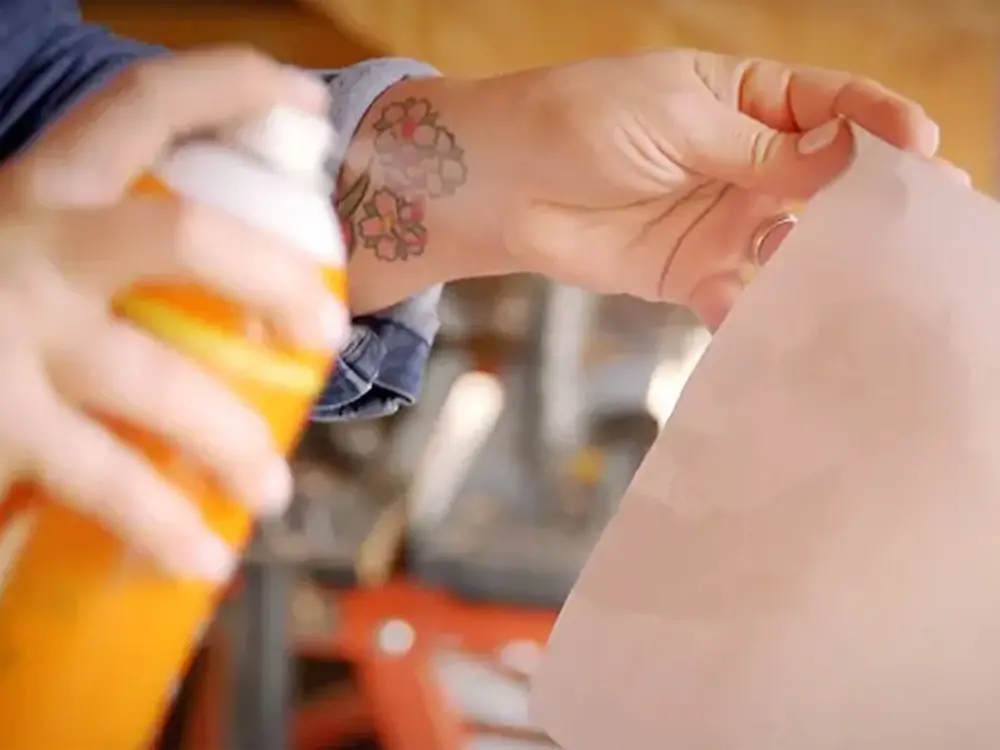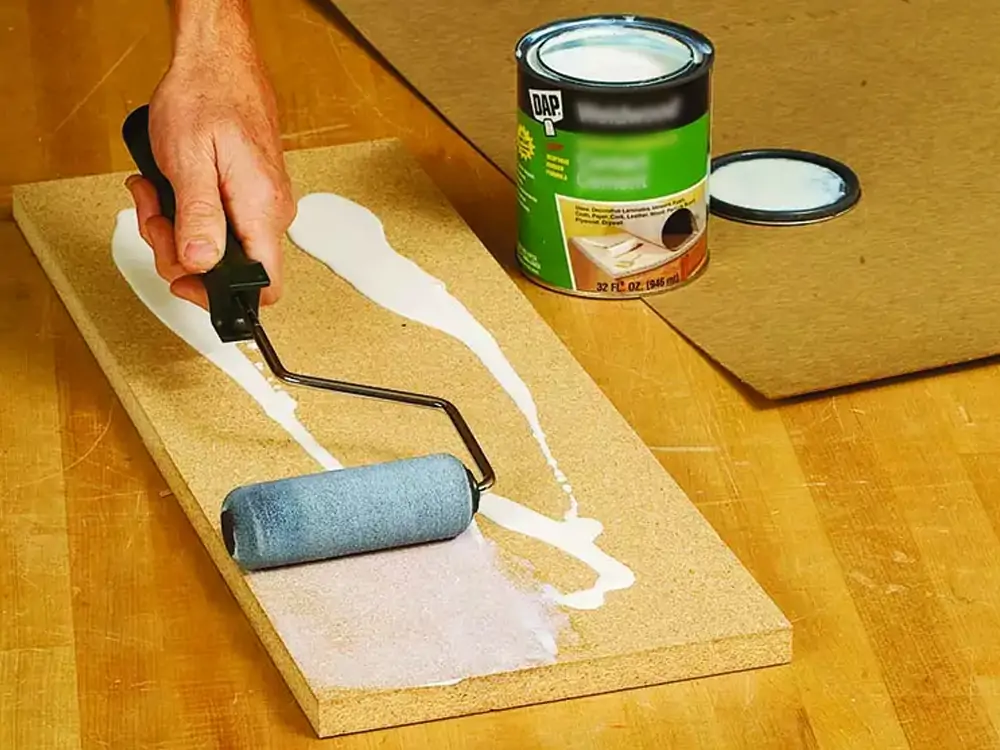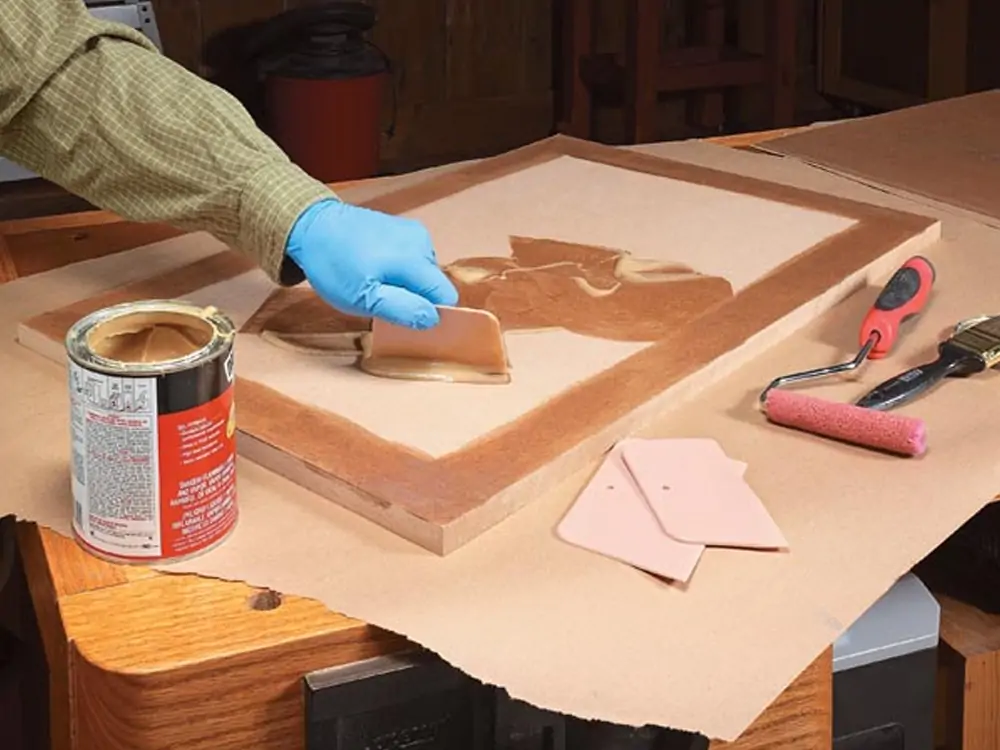When it comes to gluing various types of surfaces together, both spray adhesive and contact cement are used widely. However, one is not essentially better than the other. Your choice should be determined by the type of project you are working on.
In this post, we are going to shed light on the differences between spray adhesive and contact cement. Hopefully, here you will find some information that will help you make an informed decision. Keep reading!
What is spray adhesive?

Spray adhesive is glue stored in an aerosol can. This low viscosity glue is popular mainly because of its ease of application. There are many different types of spray adhesives intended for a wide range of applications. With certain additives, some formulations offer high levels of strength.
What is spray adhesive used for? Well, spraying glue is most commonly used to stick fabrics together, these adhesives have plenty of other applications. There are specially designed glues for a wide range of things. They include headliner, stencil, foam, vinyl, screen printing, embroidery, craft, upholstery, and more.
Flexibility or repositionability is the hallmark of this type of adhesive. If you are working with surfaces made of multiple materials, you probably need to use this type of adhesive.
The strength depends on the specific adhesive you are using. Permanent spray adhesives take up to 24 hours to be fully cured.
Pros and cons of spray adhesive
Spray adhesive is popular for its convenience, but this versatile glue still has some drawbacks. Here are the pros and cons of spray adhesive at a glance:
What is contact cement?

Contact cement is a type of adhesive known for its strong initial grab. It provides a high-strength, instant bond between two surfaces. Compared to other types of adhesives, it is applied in a unique way. You have to apply it to both surfaces rather than just one surface. Then you have to allow the cement to dry in order for it to be effective. There is also sprayable contact cement these days.
In some cases, once the cement has dried a bit, you can make the bond even more durable by pressive the surfaces together. You can use this versatile adhesive with many different types of materials. Some of them include veneers, laminate, cork, leather and rubber. There is also specially formulated contact cement for metal. The bond can resist water and heat.
However, you have to be super precise when working with this adhesive, whether it is regular contact cement or spray contact cement. It’s not possible to adjust the surfaces once they have touched each other. In addition, you have to make sure that the room in which you work is well-ventilated.
Pros and cons of contact cement
In general, contact cement is highly suitable for projects that require strong, reliable bonds. However, in order to decide whether to choose this glue for your project, learn about the pros and cons of this permanent glue.
Differences between spray adhesive and contact cement
While both spray adhesive and contact cement are used for similar purposes. However, they have differences in terms of composition, usage time, applicability and adjustability.

Composition
Spray adhesive and contact cement share a host of chemicals, but they have different compositions. The ingredients of spray adhesive include rubber, tackifying resin, and dispersant. Chlorinated solvent, varsol, and propellent are also used in this type of glue.
Contact cement is primarily rubber basted. Natural rubber as well as polychloroprene, which is a synthetic rubber, can be used to manufacture this glue. This ingredient makes it a permanent adhesive. It offers permanent bonding that can not be readjusted.
Usage time
Spray adhesives dry pretty quickly. You can expect surfaces to bond in 5 minutes or less. However, there are both permanent and temporary spray adhesives. And new generation permanent adhesives are widely used by woodworkers.
In contrast, contact cement dries slowly. If you apply sufficient pressure, the holding strength reaches its peak in about 7 days. However, you do not have to wait for 7 days to perform finishing or trimming operations. You can perform immediately after the surfaces have bonded together. Understandably, spray on contact cement dries faster.
Applicability
Spray adhesive has a relatively wider application range than contact cement. While this adhesive is best suited for fabrics, you can use it to bond a wide range of other materials.
Contact cement, in contrast, is more suitable for woodworking. If you want to attach laminate to surfaces made of laminate or other materials, you will find contact adhesive glue very convenient. Spray on contact cement is also used to attach laminate surfaces together.
Durability
There are both temporary and permanent spray adhesives. While temporary adhesives remain tacky for up to 45 minutes or so. Permanent adhesives last years, unless the bond is exposed to harsh chemicals or temperature extremes. It is important to note that the bond gradually loses its strength; it does not last forever.
For certain applications, contact cement is expected to last a lifetime. But it is impossible to specify a duration because it depends on factors such as exposure to chemicals and temperature extremes.
Temperature resistance
Water-based spray adhesives can resist temperatures up to 71 °C. There are some formulations that can resist higher temperatures—up to 120°C.
Contact cement has a relatively low temperature resistance. Therefore, you should not use it to bond brass, copper and copper alloys. This glue starts breaking down when the temperature exceeds 60°C.
Conclusion
Spray adhesive and contact cement are used for similar purposes. There are many projects for which you can use either of these two types of adhesives, such as those involving wood. Yet, for non-porous surfaces such as laminates, plastic or metal, contact cement is a better option than spray adhesive.
The bottom line is, the choice between these two types of glue depends on the type of surfaces you want to bond together. We hope now you are better prepared to make an informed decision.
